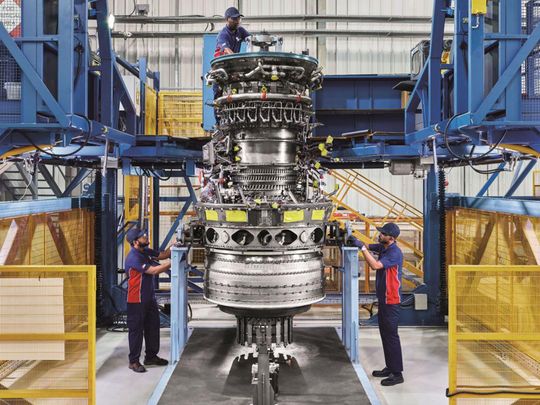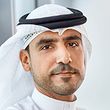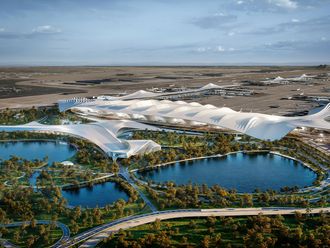
Several key trends are shaping the aviation industry landscape in the Middle East.
Anticipating significant growth in air passenger demand, the region emerges as a beacon of opportunity, with innovation, talent development, sustainability, and a surge in aircraft orders taking center stage.
The Middle East's Maintenance, Repair, and Overhaul (MRO) sector plays a vital role in supporting this growth and ensuring resilience as the engine MRO sector, specifically, is poised to increase by 6 per cent annually, reaching $10.6 billion by 2033.
The Middle East is among the fastest-growing air passenger markets, as global demand is anticipated to double by 2040. With a projected annual growth rate of 6 per cent, double the global average, the region's 110 airports connect Asia, Africa, and Europe, currently serving 170 million passengers.
Middle Eastern airports are injecting $151 billion in capacity expansion to support this exponential growth. The recent unveiling of Zayed International Airport’s Terminal A and Sharjah Airport’s $653 million expansion is complemented by Emirates' plans for a new $950 million MRO facility at Dubai World Central.
These substantial investments firmly establish the region as a central hub for aviation excellence.
Awash in change
As a result, the surge in the aviation industry in the Middle East is driving economic growth, fostering job creation and promoting local economic development. Companies like Sanad are leading the way by creating over 100 job opportunities, thereby enriching Abu Dhabi’s economic landscape.
Amid this employment upswing, sustainability remains a top priority within the sector, with commitments made to increase Sustainable Aviation Fuel (SAF) production and reduce emissions, as seen in COP28, the ‘Air-CRAFT’ initiative, and the ICAO Conference on Aviation and Alternative Fuels (CAAF/3).
Despite challenges posed by limited availability of SAF, airlines demonstrated their commitment by procuring all available supplies in 2022 and pledging a substantial $45 billion towards future procurement.
This commitment aligns with the substantial investments witnessed in fuel-efficient aircraft and next-generation engine technologies during the last Dubai Airshow. Strategic moves like Emirates’ $58 billion worth of new aircraft orders, combines with advancements like the 15-20 per cent more efficient CFM LEAP engine, indicate a proactive response to the need for sustainable aviation solutions.
Sanad's LEAP MRO Center enables airlines to service these engines within the Middle East, crucial as the region expects an additional 264.1 million passengers by 2040, making it the first center of its kind in the SAMENA region.
Talent on call
As aviation’s increasingly relies on technology, cultivating a highly skilled local workforce becomes crucial for leveraging innovations effectively. Despite persistent global talent shortages , Abu Dhabi is experiencing a rise in demand, necessitating transformative skillsets and expert training to navigate technological advancements.
Sanad, with its diverse workforce, is committed to this cause, conducting over 2,400 training hours in 2023 to enhance skills and create new job opportunities in the UAE, reinforcing Abu Dhabi’s status as a leading hub in the global aviation supply chain.
In the aviation MRO sector, talent investment is crucial for technological advancements and labor market growth. Sanad, with its workforce of over 500 individuals, is committed to fostering growth and resilience.
The Middle East's aerospace industry is poised for significant growth, driven by airport transformations, climate commitments, and innovations. As we embrace the transformative changes in the aviation industry, it's imperative to highlight the emerging technologies that will shape the future.
The Middle East, particularly the UAE, leads in Electric Vertical Takeoff and Landing (eVTOL) aircraft and air taxis, promising enhanced urban mobility. Leaders must embrace these advancements to thrive in an evolving landscape and remain relevant in future operations.
Abu Dhabi stands out as a city well positioned to capitalize on these favorable conditions for continued success in the aerospace industry.









